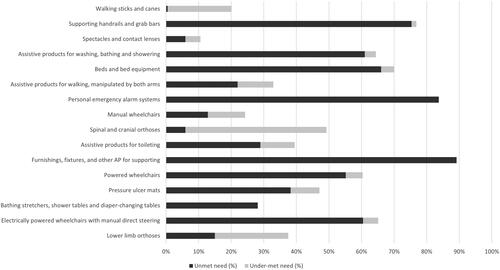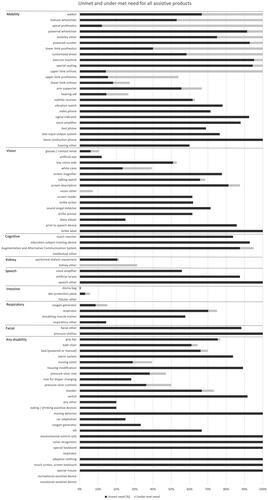Figures & data
Table 1. Key definitions of assistive technology.
Figure 1. Unmet and under-meet needs among the most-needed assistive products.

Table 2. Indicators for most-needed APs.
Figure 2. AP Adoption process.

Figure A1. Unmet and under-meet need for all assistive products similar to , this horizontal histogram shows the proportion of need that is unmet or under-met for all included assistive products in the National Disability Survey, of which there are 77.

Data availability statement
All data utilized in this case study are available, either publicly or by request, through national statistics office websites of the Korean government.
